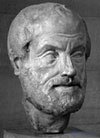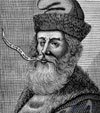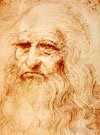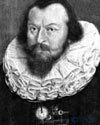Lecture
| This article briefly describes the history of the development of scientific disciplines that have contributed to the field of artificial intelligence in the form of specific ideas, beliefs and methods. As in any historical essay, one necessarily has to limit oneself to describing a small circle of people, events and discoveries, ignoring all the other facts that were no less important. This historical excursion around a limited range of issues. Philosophy (period from 428 BC to the present)
 Aristotle Much later, Raimund Llull (died 1315) put forward the idea that useful reasoning can actually be carried out using a mechanical artifact.  Raymond Llull  Thomas Hobbes Gottfried Wilhelm Leibniz (1646-1716) created a mechanical device designed to perform operations on concepts, not on numbers, but the scope of its operation was rather limited. After humanity realized what a set of rules should be capable of describing the formal, rational part of thinking, the next step was that the mind began to be viewed as a physical system.  Leonardo da Vinci Despite the fact that Descartes was a staunch supporter of views that recognize only the power of the mind, he was also an adherent of dualism . Descartes believed that there is such a part of the human mind (soul, or spirit) that is outside of nature and not subject to physical laws.  Wilhelm Schickard If we assume that knowledge is manipulated by the physical mind, then the following problem arises - to establish the source of knowledge. Such a scientific direction as empiricism , the ancestor of which was Francis Bacon (1561-1626), the author of the New Organon, can be characterized by the statement of John Locke (1632-1704): "In human understanding, there is nothing that is not manifested primarily in the senses."  Rene Descartes In the theory of confirmation, Rudolf Carnap and Karl Hempel (1905-1997) attempted to understand how knowledge can be gained from experience. In Carnap’s book The Logical Structure of the World, an explicitly defined computational procedure is defined to extract knowledge from the results of elementary experiments. Apparently, this is the first theory of thinking as a computational process. The final element in this picture of philosophical studies of the problem of the mind is the link between knowledge and action. This question is vital for artificial intelligence, since intellectuality requires not only thinking, but also action. In addition, only by understanding the ways of justifying actions, one can understand how to create an agent whose actions will be reasonable (or rational). Aristotle argued that actions are based on a logical connection between goals and knowledge about the results of this particular action. Aristotle's algorithm was implemented after 2300 years by Newell and Simon in the GPS program. Now what is created on its base is called the regressive planning system . Target-based analysis is useful, but does not provide an answer to what to do if several options lead to the goal or no action can achieve it fully. Antoine Arnaud (1612–1694) correctly described the quantitative formula for deciding what action should be taken in such cases. In the book of Utilitarianism, the utilitarian John Stuart Mill (1806–1873) proclaimed the idea that the criteria for making rational decisions should be applied in all spheres of human activity. |
Comments
To leave a comment
Artificial Intelligence. Basics and history. Goals.
Terms: Artificial Intelligence. Basics and history. Goals.